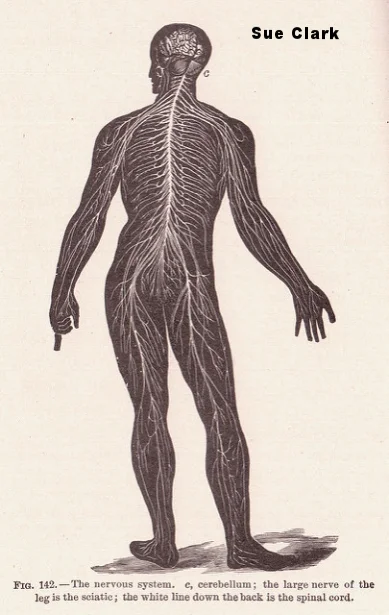QT 52 - A Boneheaded Decision

Why Hello There, and welcome to Kitchen Catastrophe Quick Tips, where we focus a post on one specific aspect of cooking, cooking culture, or, you know, whatever. Since I’m the only one who makes the rules, I’m accountable only to myself, and I KNOW that asshole never checks the receipts. Today, we’re going to talk about Bones. What do they add to dishes? How many are there? Is there really a skeleton hiding inside of me? These answers and more will be explored. Hey, that rhymed!
David Boreanaz and Emily Deschanel
Heh. Little TV jokes to start us off today. Anyway, let’s answer those top three questions in reverse order: arguably, no, there is not a skeleton hiding inside of you. Most of the “you” that thinks and feels is in your nervous system, and that hangs out INSIDE your skeleton. Technically, the meat parts of you are the layer around your protective skeleton armor, and you hang out inside that whole thing. Which is cool, if also somewhat unsettling.
Technically, "you" are an armored octopus driving a mech made of meat.
The second question Is super complicated. Like, “how many bones are there?” what the hell does that even mean? In the world? A LOT. Like, fun fact, there are roughly 50 billion chickens in the world. Chickens have 120 bones in them. That means there are roughly 6 trillion chicken bones IN LIVING CHICKENS on Earth right now. That’s a lotta drumsticks! Maybe you meant to ask (and by “you”, I mean “Me, using a rhetorical device”) how many TYPES of bones there are, and that’s…look, I’m not a vet. I know animal bones tend to use the same names as human bones, so I’ll guess somewhere around 206, but I also assume there are structures in some animals we don’t have, so let’s knock that up to 275 to be safe.
Lastly, the only actually relevant question you asked: “What do bones add to dishes?” And that question has a multi-faceted answer. So let’s stop wasting time so Jon can talk about chicken bones like some kind of weirdo, and get to the meat of the matter.
Facet 1: Physical presence
This is the simplest thing bones add to food: their physical presence. But, as with most simple things, there are hidden depths to it. What does the physical presence of a bone in your food add to it? Firstly, of course, is a choking hazard. Unless it’s a T-Bone, in which case, while you CAN choke on it, that’s more of a “failing your first test in sword-swallowing school” kind of choking than normal kinds.
Due to extended connection to circus performers, I actually know (in theory) how to eat fire and swallow swords. It's not a skill I've ever felt the need to attempt in practice.
Bones physically add structure, of course. They form a framework around which the meat sits. You see a lot of thrones built from the skulls of people’s enemies, but rarely out of their spleens or livers. That structure can actually add to a dish’s ease of consumption as well: drumsticks can be picked up by their bone, making them more appealing as finger food.
One part people forget about, however is that the bone’s physical presence also affects how the dish reacts to heat. Bones convey heat differently than moist tissue, affecting the temperature of the meat around them. Specifically, they absorb more of it, protecting the meat behind them. So the meat next to the bone is going to be cooked less than the meat on the other edges. Further, the presence of the bones has another usage: it reduces the exposed surface area of the meat. This is important, because it’s through the meat’s surface area that it loses its moisture. A cut of meat losing water from 4 sides is going to end up with less water than one losing it from 3. That’s just math. Meaty moisture math.
I was going to make a lewd joke here about "stuffing moist birds", but then I realized this chicken really looks like a Mon Calamari, and my nerd side shoved my pervert aside.
Facet 2: Texture
The second thing bones add to a dish is texture. You may say “Jon, that’s the same thing as physical presence”, and allow me to refute that with a “nuh-uh”. I’m talking about a couple things here, only a couple of which are based on the physical presence of the bones, so shut up until I’m done talking!
First, though, I will concede that the physical presence of bones does make an impact on texture. As I already noted, cooking a bone-in chop should produce a moister piece of meat than a boneless one. Additionally, the solidity of the bone provides a contrast. There’s a reason food is “fall-off-the-bone” tender: the bone’s solidity serves as contrast for the tenderness of the meat.
The physical presence of the bone also shapes the texture of the meat in another way: connective tissue. Meat doesn’t simply naturally stick to your bones, it takes other tissues to keep it there. And where there are bones, there’s often a spree of other elements like tendons, cartilage, and so on. Depending on your cooking process, those elements can be rendered into additional unctuousness and flavor, and holy crap I did not expect to spell “unctuous” right on the first try! I fucked up the one in quotes celebrating the first one!
However, that’s all texture that bones bring to meats. What about to other enterprise? Like, for instance, Broths, Stocks, and Two Smoking Barrels? Wait, I got confused.
Though "Jon becomes distracted by a Guy Ritchie movie" is a pretty common occurrence.
I still need to force myself to watch the new King Arthur.
The point is that bones contain collagen, a binding agent that with low, slow cooking can be rendered out. THIS is what thickens broths into stocks. It’s also what creates gelatin. Seriously, Jell-o used to be made by boiling horse bones. I believe it’s now made from pig bones. But, yeah, if you have a vegan friend who loves Jello shots, you now have a way to fuck with them. Or any Muslim friends. Maybe. See, the Quran forbids “the flesh of the pig”, and gelatin is derived from boiling bones, which aren’t really “flesh”, but it can also be derived from boiling SKIN, which definitely IS…It’s a whole thing. Luckily, commercial factors have already stepped up to handle these things, and halal and vegan options for gelatin exist. Technically, “vegan gelatin” is a gelatin substitute like Agar-agar, but today’s about bones, not Jello, so we’re moving on.
It’s the additional release of collagen that creates texture in liquid treatments. Many claim there’s a leaching effect on collagen from bones in meat, but that claim is less verifiable: it doesn’t really correlate to the release mechanisms involved, and some studies have shown it simply doesn’t happen. It’s quite likely a matter of perception: most bone-in meat products carry heavier symbolic weight, and tend to be more expensive at restaurants, creating an air of increased value. Like how if you put on a suit people assume you’ve got your shit together.
I guarantee you this guy is still dumb
Facet 3: Flavor
This is connected with the texture element from before, and especially the points in the last paragraph: from a very technical standpoint, having a bone in meat doesn’t technically make the meat TASTE better. It just does everything short of that exact effect, making meat moister (Man, I did not think I’d have to use every form of “moist” today. This may be the moistest post I’ve ever written.), providing textural contrast, and so on.
At a certain level, it becomes an intentional attack.
This is in reference to a standard cut of meat like a pork chop, chicken breast, or so forth, however. Some cuts have, for lack of a better phrase, “better bones”. If the marrow is exposed, THAT can leak out while cooking and flavor the attached meats. And broths and stocks are certainly flavored by the bones used in them. Gelatin isn’t, because it’s more thoroughly refined, removing the minerals and flavor components produced in the initial denaturing.
You may recall almost a year ago I wrote a post about cooking marrow bones, and the enjoyment I gained from it. So it’s not like there’s no flavor in bones. It’s simply a little harder to reach than many think.
No Bones About it
And that’s it: a semi-exhaustive review of the effects of bones in cooking, from flavor to texture, as well as a weird amount of talk about Jello! And even this list has some glaring omissions. You’ll note I don’t talk at all about fish bones, and their culinary uses or importance. The short summary is: more frequent choking hazard, common stock option, but interestingly, smaller fish skeletons can be fried and eaten on their own, but we just don’t have time to cover all that today in addition to everything else. I hope this post helped you guys in some small way in working with bones in your own kitchen.
MONDAY: JON GETS REALLY STEAMED, AND CHICKEN SKIN GETS BAKED!
THURSDAY: I’VE HAD AN IDEA, BUT I DON’T REALLY LIKE IT AT THE MOMENT. LET ME TALK IT OVER WITH SOME PEOPLE, AND I’LL GET BACK TO YOU ON MONDAY.











